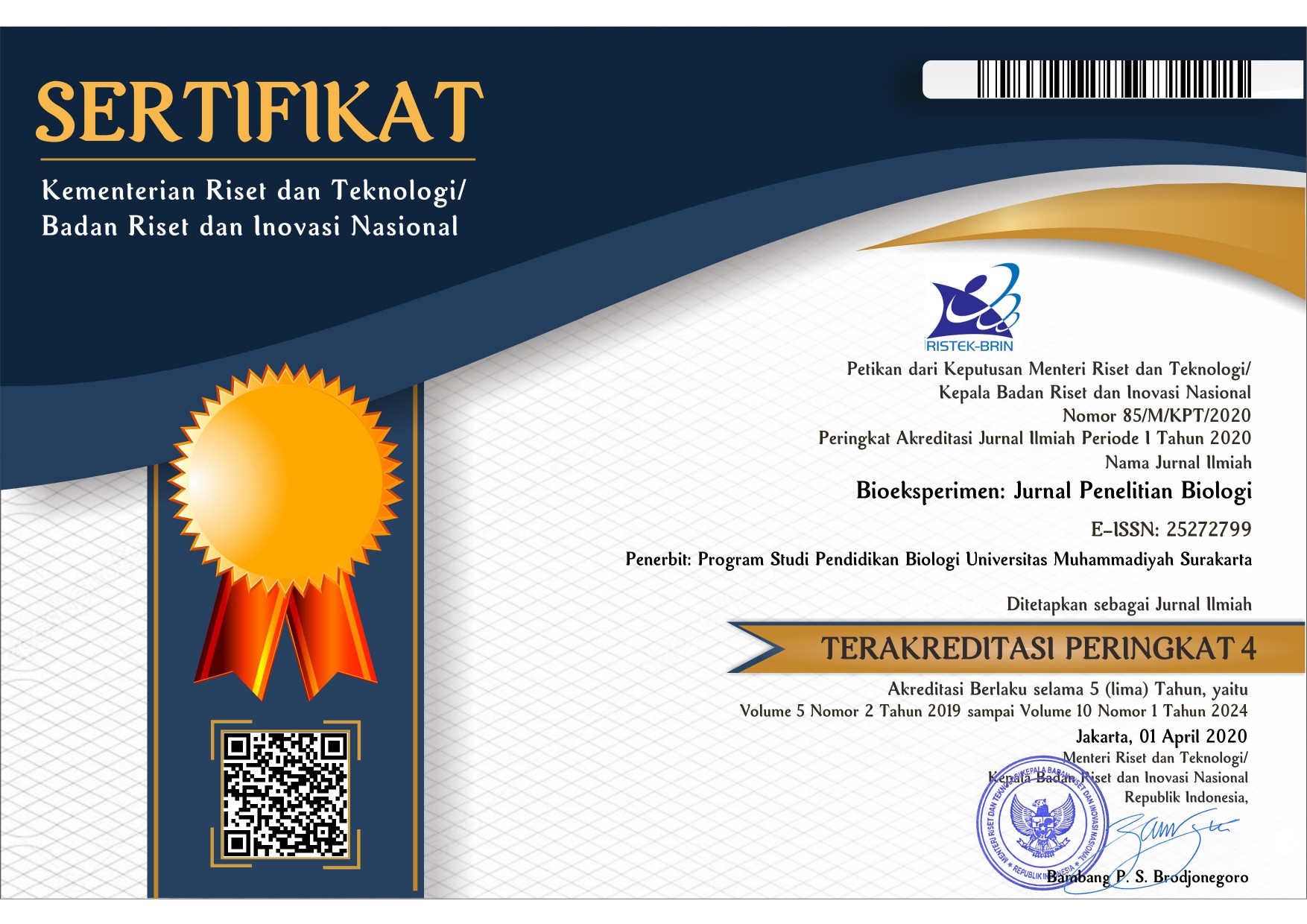Isolasi dan Karakterisasi Bakteri Indigen Pengurai Lemak pada Limbah Cair Batik Tulungagung
Hasminar Rachman Fidiastuti(1*), Anis Samroatul Lathifah(2), Mohamad Amin(3), Yudhi Utomo(4)(1)
(2) Pendidikan Biologi, Fakultas Ilmu Pendidikan, Universitas Tribhuwana Tunggadewi
(3) Biologi, Fakultas Matematika dan Ilmu Pengetahuan Alam, Universitas Negeri Malang
(4) Kimia, Fakultas Matematika dan Ilmu Pengetahuan Alam, Universitas Negeri Malang
(*) Corresponding Author
Abstract
Keywords
Full Text:
PDF (Bahasa Indonesia)References
Bayaomi MN, Al-Wasify RS, Hamed SR. 2014. Bioremediation of textile wastewater dyes using loval bacterial isolates. International Journal of Current Microbiology and Applied Sciences 3: 962-970.
Buthelezi, S.P., Olaniran, A.O., Pillay, B. 2012. Textile dye removal from wastewater effluents using bio flocculants produced by indigenous bacterial isolates. Molecules 17:14260-14274
Dewi RS, Rina SK, Erni M, Yekti AP. 2018. Decolorization and detoxification of batik dye effluent containing indigosol blue-04B using fungi isolated from contaminated dye effluent. Indones J Biotechnol 23 (2): 54-6.
Hasminar RF, Anis SL. 2018. Uji Karakteristik Limbah Cair Industri Batik Tulungagung: Penelitian Pendahuluan. Proceeding dalam Seminar Nasional Pendidikan Biologi dan Saintek III: Isu-Isu Strategis Sains, Lingkungan, dan Inovasi Pembelajarannya. Program Studi Pendidikan Biologi FKIP Universitas Muhammadiyah Surakarta, Surakarta, 5 Mei 2018.
Hatamoto, M., Imachi, H., Yashiro, Y., Ohashi, A., and Harada, H. 2007. Diversity of anaerobic microorganisms involved in long-chain fatty acid degradation in methanogenic sludges as revealed by RNA-based stable isotope probing. Appl. And Environ Microbiology 71: 4119-4127.
Moller P, Wallin H. 2000. Genotoxic hazards of azo pigments and other colorants related to 1-phenylazo-2-hydroxynaphthalene. Mutation Research 462: 13-30.
Pandey A, Singh P, Iyengar L. 2007. Bacterial decolorization and degradation of azo dyes. International Biodeterioration & Biodegradation 59: 73-84.
Shah, MP. 2018. Bioremediation-Waste Water Treatment. J. Bioremediat Biodregad. 9: 427.
Sundar K, Vidya R, Mukherjee A & Chandrasekaran N. 2010. High chromium tolerant bacterial strains from palar river basin: impact of tannery pollution. J Environ Earth Sci, 2: 526-530
Zissi U, Lyberatos G, Paylous. 1997. Biodegradation of aminobenzene by Bacillus subtilis under aerobic conditions. Journal of industrial microbiolog and biotechnoogy 19: 49-55.
Article Metrics
Abstract view(s): 1210 time(s)PDF (Bahasa Indonesia): 1634 time(s)
Refbacks
- There are currently no refbacks.








